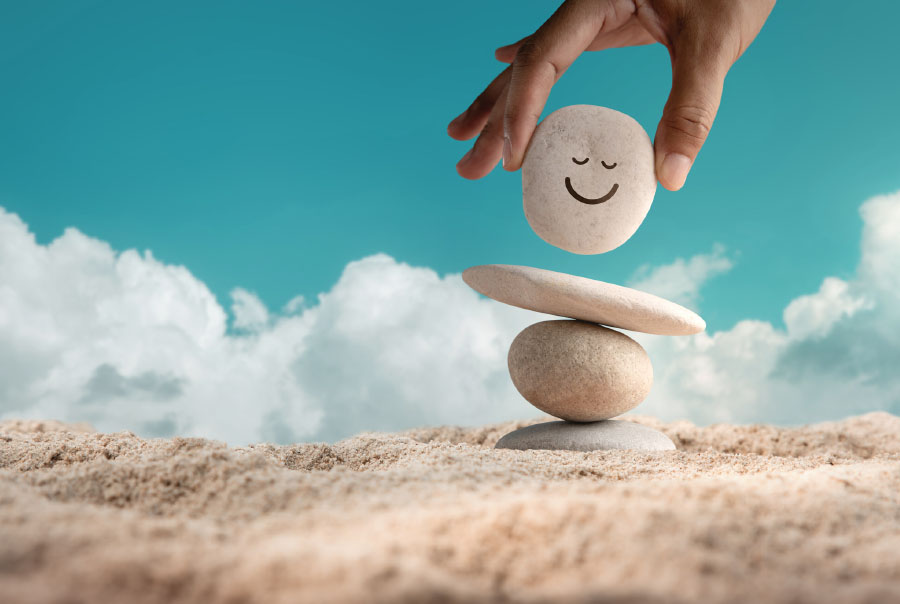Disclaimer: The article is developed in partnership with BetterHelp.
The human emotional spectrum is vast and varied. While our emotions are an intrinsic part of our experience, learning how to manage them is often a learned skill, one that can take time and practice. Emotional balance is about being in tune with your feelings, ensuring they don’t overwhelm or dominate your life but instead, guide and enrich it.
This post aims to illuminate the path toward emotional equilibrium through a lens of practical and compassionate exploration.
Understanding Your Emotions
Before you can learn to balance your emotions, you must know what you’re dealing with. Emotional awareness is a keen understanding of your emotional makeup, what triggers your feelings, and the patterns they form.
In a world that often values logic over feeling, it’s easy to detach from our emotions. Yet this detachment can lead to a loss of internal compass. Being aware of your emotions allows you to respond more effectively to life’s challenges, enhancing your decision-making and communication skills.
Identifying Triggers and Patterns
Every emotional response has a trigger. It could be as simple as a particular tone of voice or as complex as a whole series of events. Begin by identifying your triggers and the patterns they set in motion. Awareness is your first line of defense in maintaining emotional equilibrium.
Practical Strategies for Emotional Well-Being
To bring balance to your emotions, engage in a series of practical techniques that not only acknowledge your feelings but also provide pathways to manage them healthily and sustainably.
Mindfulness
Mindfulness, the art of being present in the moment, is a powerful tool in the quest for emotional balance. At its core, mindfulness is about bringing your attention to the present moment, free from judgment and full of acceptance. For individuals experiencing a relentless churn of thoughts, this practice can offer a much-needed respite, allowing them to observe their thoughts rather than being consumed by them.
Journaling for Self-Reflection
A journal can serve as a mirror for your emotions, reflecting your experiences and emotions in written form. Journaling helps to process and make sense of these emotions. Take time regularly to write freely, exploring your thoughts and feelings without judgment.
Healthy Coping Mechanisms
When emotions run high, we can be tempted to reach for unhealthy coping mechanisms such as excessive drinking or social media binging. Instead, develop a toolkit of healthy responses. This could involve going for a walk, talking to a friend, or engaging in a favorite hobby to redirect your emotional energy.
Seeking Professional Help When Needed
There is no shame in asking for help, especially when it comes to the intricacies of our mental health. Professional therapists offer guidance and support, helping you to work through deeply rooted emotional issues.
One effective therapy approach is emotion-focused therapy (EFT), which places feelings at the core of the healing process.
Learn more about emotionally focused therapy here: https://www.betterhelp.com/advice/therapy/what-is-eft-therapy-6-things-you-should-know/
Incorporating Balance in Your Daily Life
It’s not enough to balance your emotions in isolated moments of stress. True emotional equilibrium is a lifestyle and a continuous practice.
Creating a Supportive Emotional Environment
Surround yourself with people who uplift and support you emotionally. Cultivate relationships that allow for open and honest expressions of feelings. This network acts as a soft landing spot when you need to share the weight of your emotions.
Setting Boundaries and Practicing Self-Care
Boundaries are the fences we build to protect our emotional landscape. Learn to set boundaries in your personal and professional life to prevent others’ emotions from domineering your own. In the same vein, self-care is the intentional act of nurturing your emotional well-being. Prioritize activities that bring you joy and peace, whether it’s a warm bath or a good book.
Building Resilience and Emotional Intelligence
Resilience is the ability to bounce back from adversity, a crucial aspect of emotional balance. Work on developing your emotional intelligence, which involves recognizing and appropriately responding to emotions in yourself and others.
Conclusion
Achieving emotional balance is not a static state but a dynamic dance. It is the art of recognizing, understanding, and managing the myriad feelings that color our lives. It requires patience, self-compassion, and a willingness to continually learn and grow.
This guide is but a starting point in this journey. Remember, the practice of emotional balance is not just for yourself. By cultivating inner harmony, you become a beacon of emotional well-being for those around you, lighting the way for a more connected and compassionate community.











